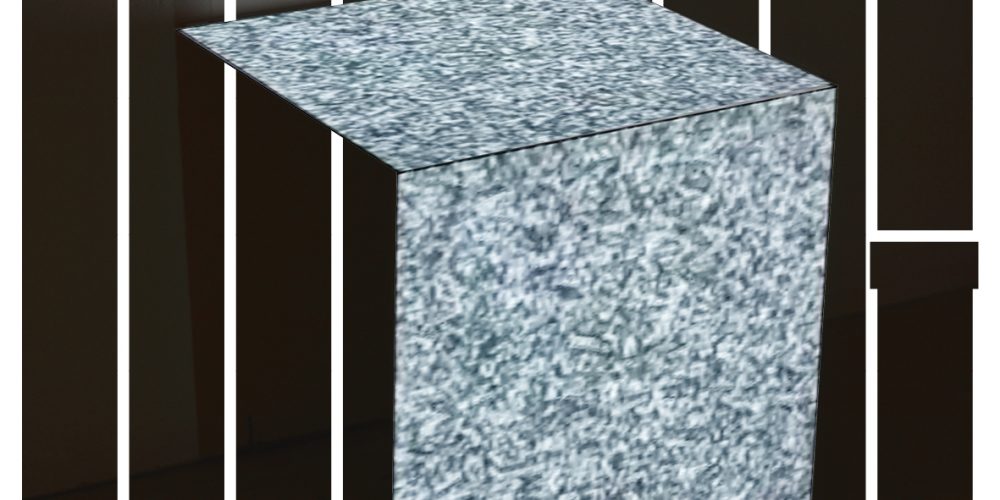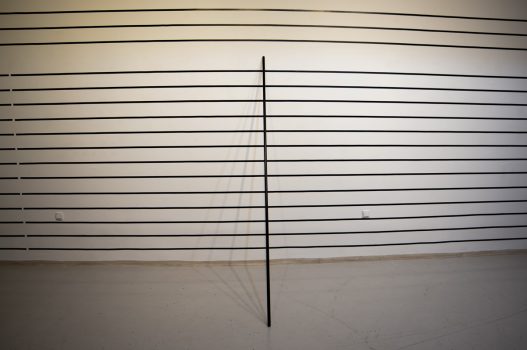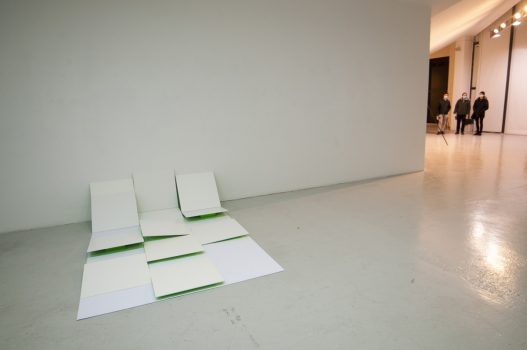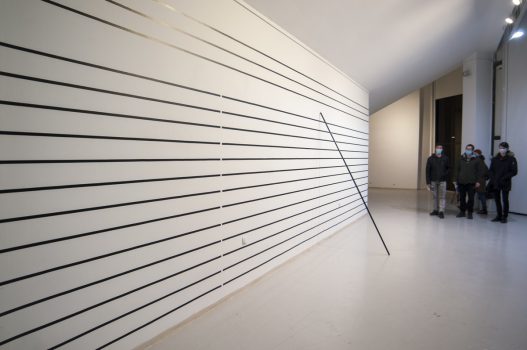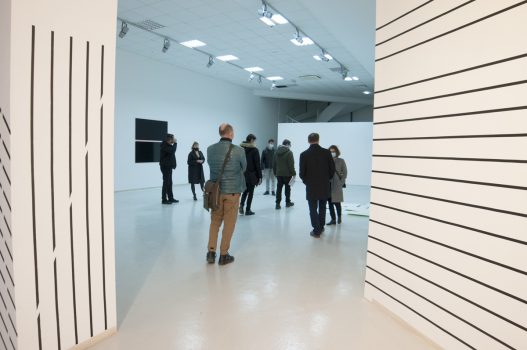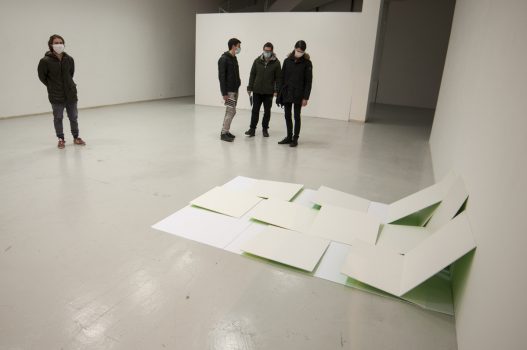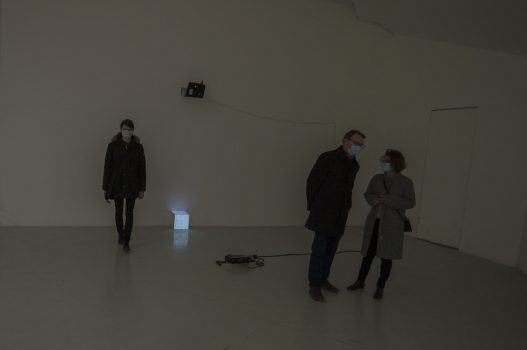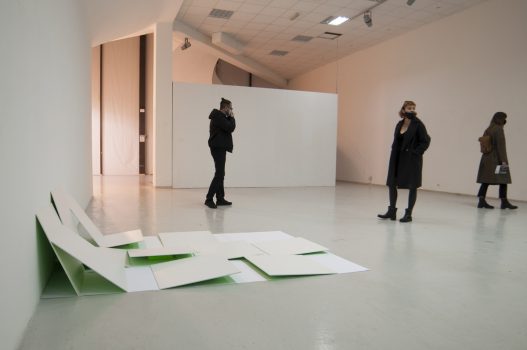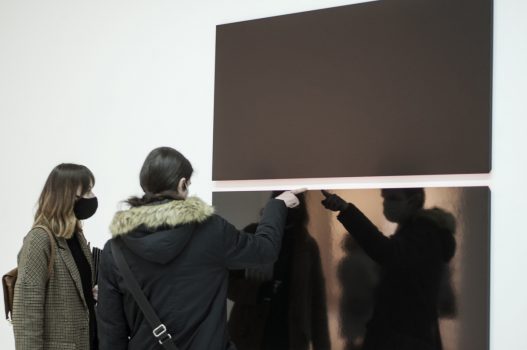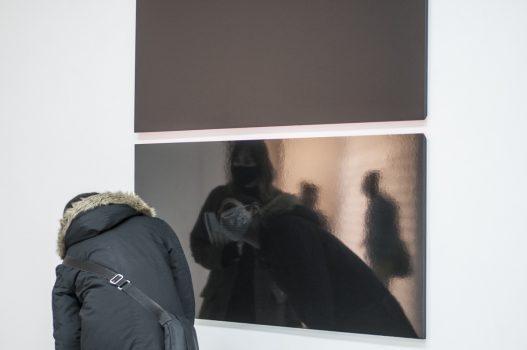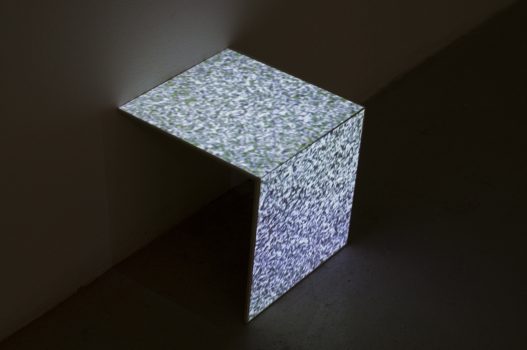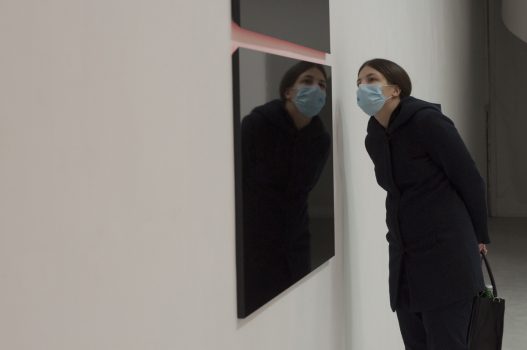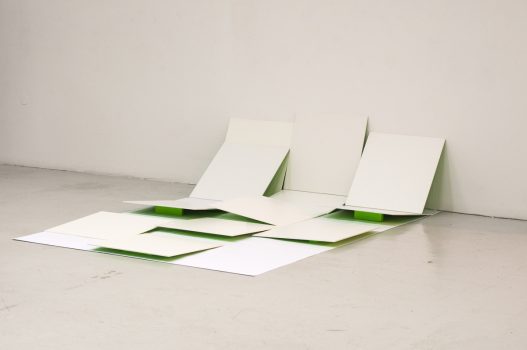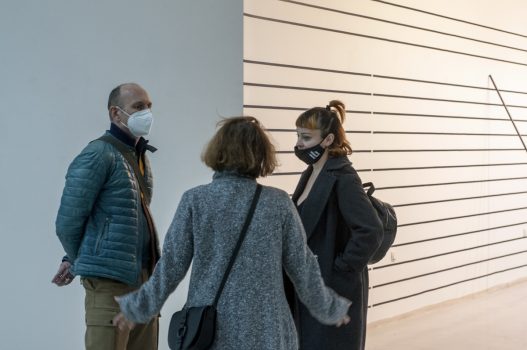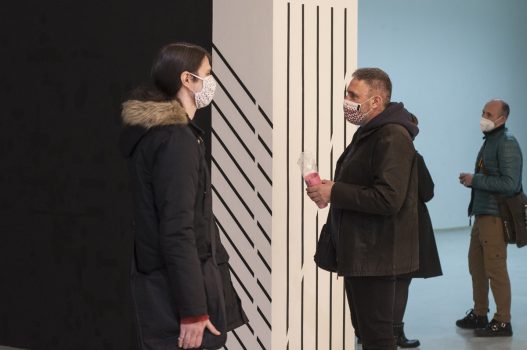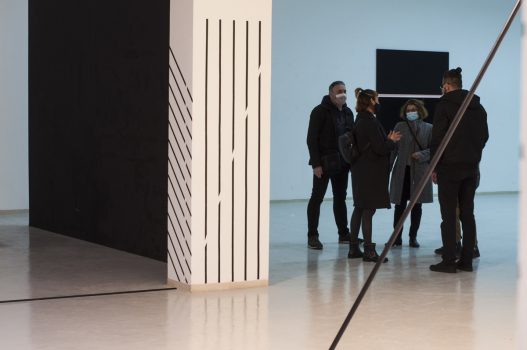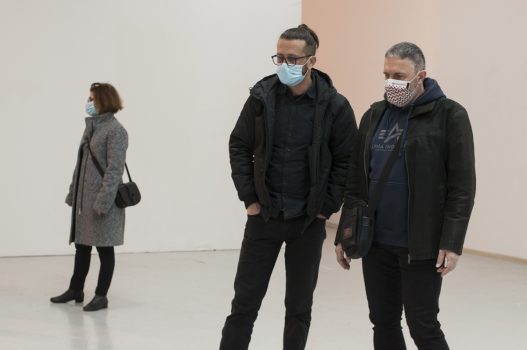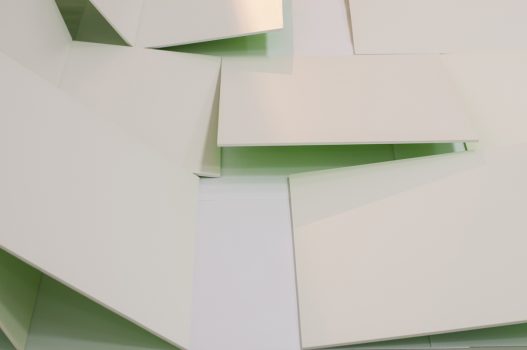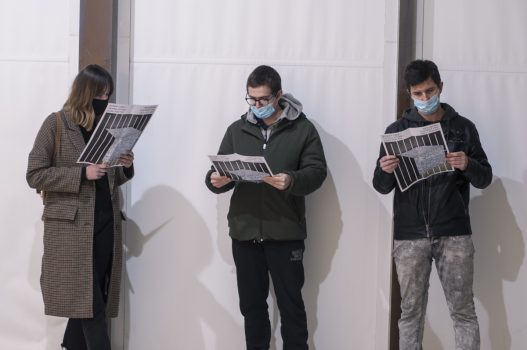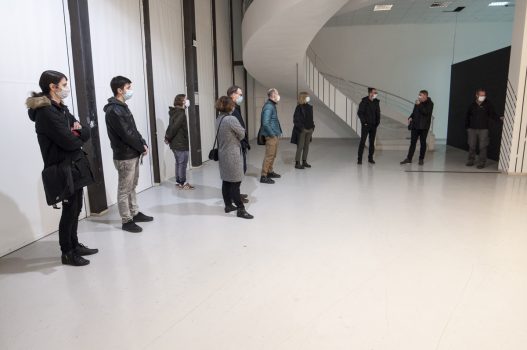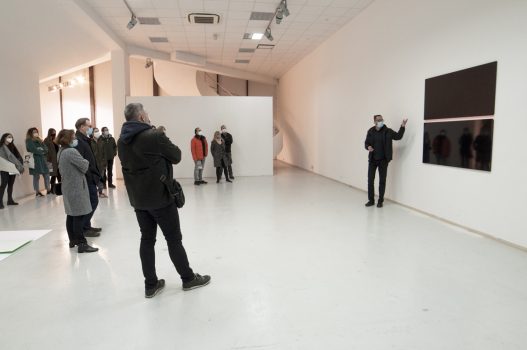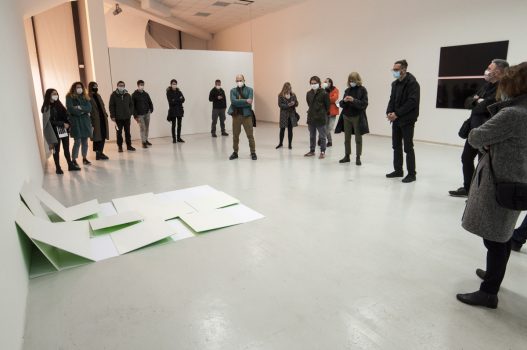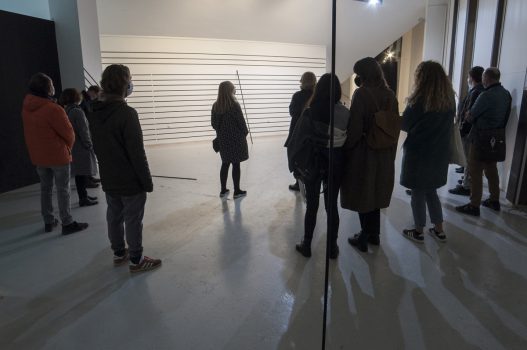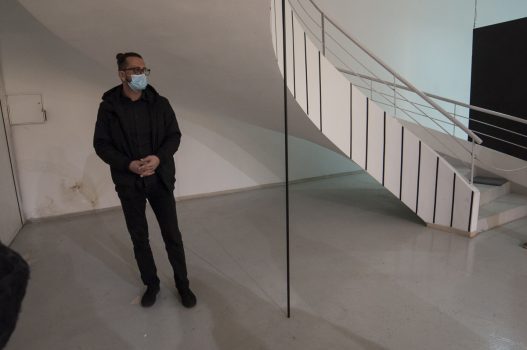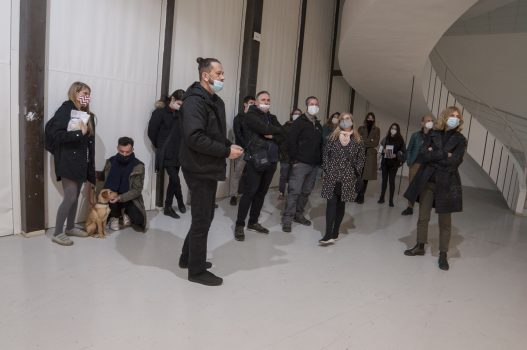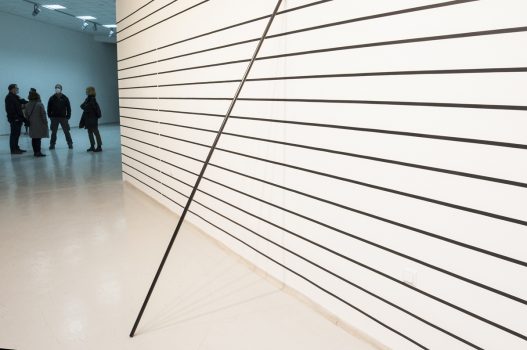Galerija MKC, Dom mladih Split, Ulica slobode 28
OPENING: Thursday, 25th February 2021, at 20:00
Exhibition is opened untill Friday, March 5t, you can see it by calling 0955627223.
I came across an interesting story recently. A team of scientists, mostly astronomers, was tasked with presenting the results of their research, involving data collection using radio telescopes, to a government-appointed committee of finance planners. In contrast with the classic optical telescope which utilizes a lens to gather visible light, thereby allowing us to observe celestial bodies and phenomena with our own eyes, the radio telescope gathers and measures cosmic radio waves. Radio telescopes facilitate the collection of large quantities of mathematical data, which is subsequently interpreted by scientists and used as a foundation for further inferences and all manner of theoretical advances. The team of scientists, knowing fully well that a tedious sequence of numbers, graphs and calculations would not mean a thing to the laypeople appointed to the committee, decided therefore to present their data in pictorial form. In other words, this was a visualization, or visual interpretation, of scientific articles. To serve as the basis for the production of this imagery they had settled on the landscape paintings of English painter William Turner. Certain collections of data were assigned distinct colorings, all sampled from Turner’s work. The variability in the data was, consequently, expressed through shifts in color tone and changes to the modes of “painting”, the “brushwork”… The images thus obtained could be understood by the committee. They felt familiar and immediate to them. The scientific data was made clear(er) by virtue of the visual quality imparted to it. This approach enabled the scientists to successfully convey the results of their work to the members of the committee, and to justify their research costs.
Robert Fišer’s work is also rooted in science, more specifically in quantum theory. However, unlike the inventive scientists from our story, Fišer does not venture into the visualization of science. Rather, he takes certain basic concepts from quantum theory (hyperspace, dark matter, black hole, event horizon, etc.) and uses them as the foundation for further reflection, or as a theoretical backdrop to his artistic explorations of pictorial or visual language. Just as he strips these concepts down to their bare essences – his frequent use of excess serving only to better establish or point to this more general rule – Fišer pares down his own visual language to the bare necessary minimum. This reductionist approach allows him to put forth his musings on the nature of fundamental visual vocabulary items such as image, space, or medium. Of course, the resulting reduction of visual elements does not entail a reduction at the level of meaning or concept. All of Robert Fišer’s work is deeply deliberate. The scientific bedrock which supports his work is never so austere as to become banal or anecdotal. His own elaborations relating to the conceptual provenance of his work display considerable (scientific) exactness and clarity.
Seeing as the pieces being exhibited on this occasion come with a unique key by which to read and interpret them, it is probably best to allow the author’s own words, or at least a handful of paraphrases thereof, to elaborate on the exhibit further:
Dark Matter 2 represents Fišer’s meditations on the nature of visibility and invisibility; on the existence of elements of reality that are visible only by virtue of the effects they leave in their wake. A site-specific installation, Dark Matter 2 makes use of the floorplan of a given gallery. It is an object comprised of unfurling forms, parts of which have been treated with a special coating of paint. This paint is only visible when exposed to UV light (or rather UV radiation). But even under UV light we cannot actually perceive this paint layer directly, we may only observe the visible light reflected off of nearby surfaces, such as the floor in this case.
10-44 seconds: a logarithmic mathematical expression that denotes the scale of the brief time period directly after the Big Bang, when time and space came into being – the two fundamental attributes of our perception of reality. It is these two attributes that are given form in Fišer’s 10-44 sec. The artist projects an overlay of white noise onto an object in the exhibit space, and in doing so transforms the object into raw time, space and matter. White noise, of the type one might find on a TV screen after scheduled programming hours, consists for the most part of cosmic background radiation.
Wormhole is a site-specific installation. The horizontal and vertical lines on the walls represent the spacetime continuum. The intermittent breaking of these lines, as well as their displacement or transitions between different materials, amount to a sense of eccentricity and irregularity. But at the same time these transgressions both accentuate and affirm an underlying order. It is precisely the departures from that order that exert a unifying effect on the entire space. They function as wormholes connecting distant elements in the space, giving rise to a general ambience – a space as well as a hyperspace.
Event Horizon is a polyptych composed of two surfaces that reflect light along their boundaries, illuminating the space which divides and separates them. Within the general theory of relativity, the term event horizon, in its most general sense, is used to describe a spatiotemporal boundary between two regions, such that the two regions are unable to establish any kind of communication with one another. The term is most often associated with the phenomena of black holes. Upon traversing the event horizon of a black hole and entering the region within, all conventional rules and natural laws cease to function. Matter, energy, and even light, are unable to escape the confines of such a space. Sooner or later, any and all entities within the event horizon will become compacted into a point of singularity. The principles that inform Robert Fišer’s process and work are not unlike those governing an event horizon: the various elements that make up his art are compacted, both physically and theoretically, as far as they can possibly go.
This entire exhibit can be regarded as a kind of event horizon. On the one hand there is the physical, or “normal” world-space-universe, the one that is scrutinized by such scientists as the ones we encountered earlier in this text. And on the other hand there is the world of art, where Fišer has found his life’s work. Of these two worlds, the former teaches us what is possible, but the latter declares that anything is.
For it is precisely through art, not reality, that all things are made possible.
Vedran Perkov
ABOUT THE AUTHOR:
Robert Fischer was born in Osijek in 1976. He graduated in 2012 at the Academy of Arts in Osijek and have been actively exhibiting since 2008, so far he has had several solo and group exhibitions. Awarded several times for his work. Member of the Croatian Society of Fine Artists in Osijek and one of the founders of the Popup project. He is engaged in painting and multimedia. He lives and works in Osijek.
AUTHOR: Robert Fišer
CURATOR: Vedran Perkov
NMG PROGRAMME CURATORS: Natasha Kadin, Vedran Perkov
DESIGN: Nikola Križanac
TRANSLATION: Ivan Berecka
EXHIBITION LAYOUT AND DOCUMENTATION: Tihana Mandušić
DONORS: Croatian Ministry of Culture and Media, the City of Split
MAVENA SUPPORTED BY: The National Foundation for Civil Society Development, the Kultura Nova foundation
ACKNOWLEDGEMENTS: KUM, PDM, MKC

